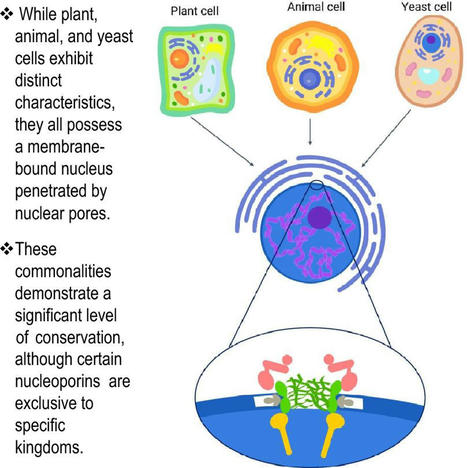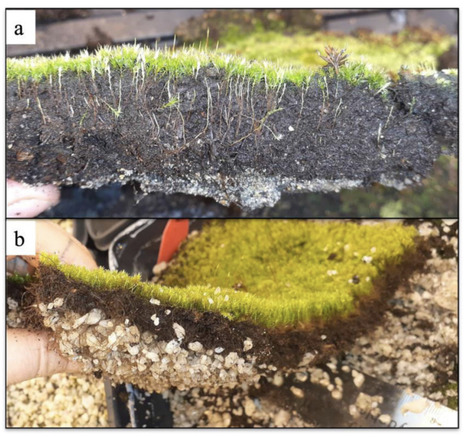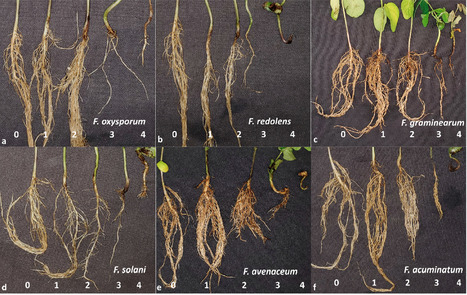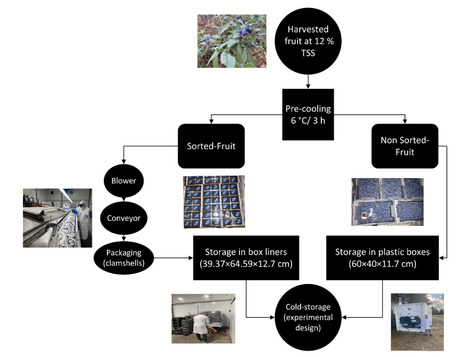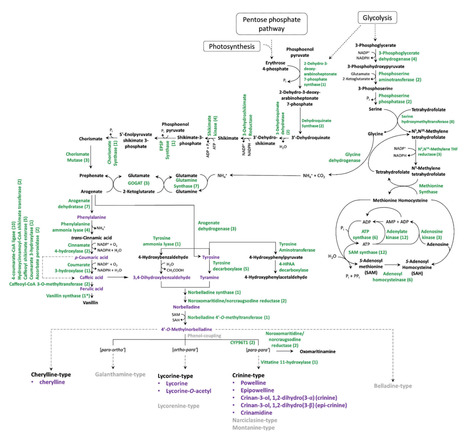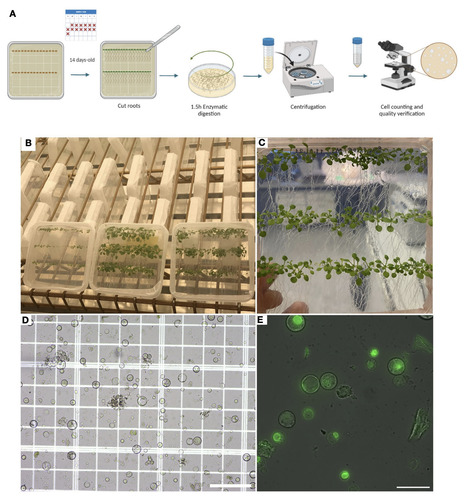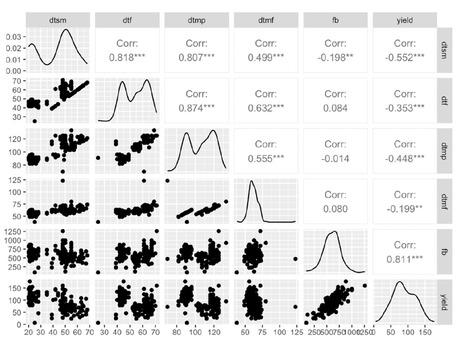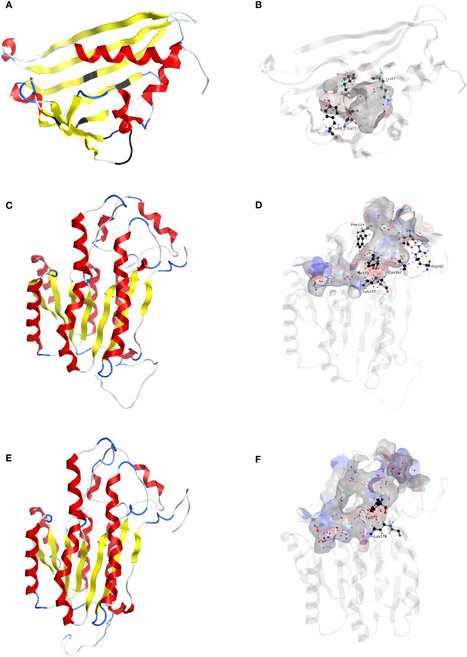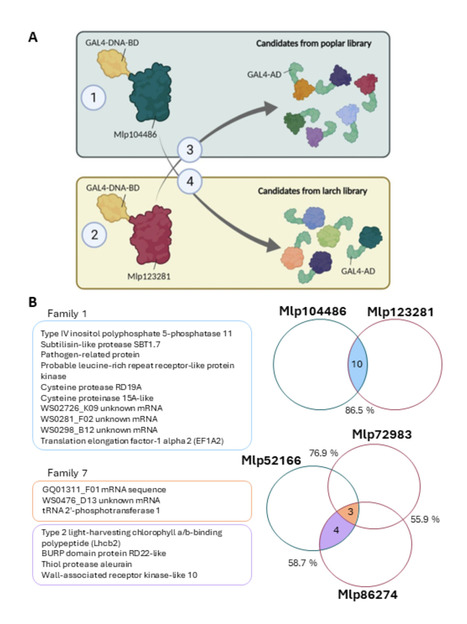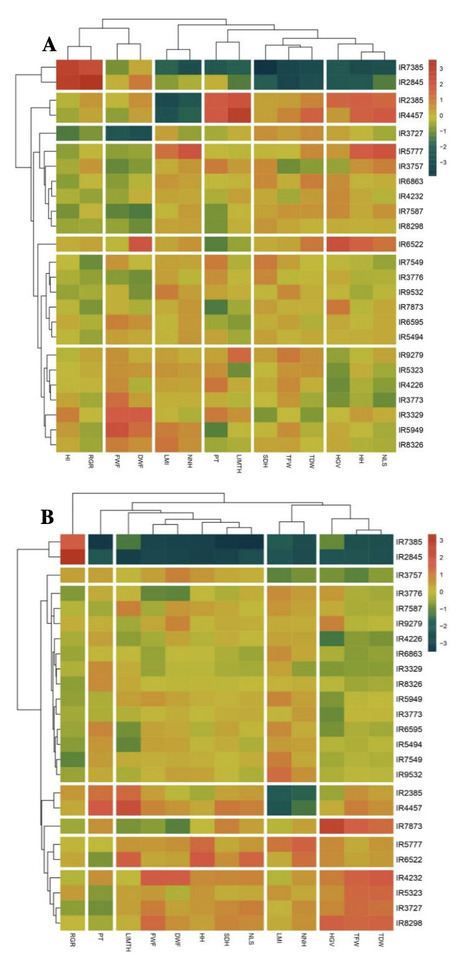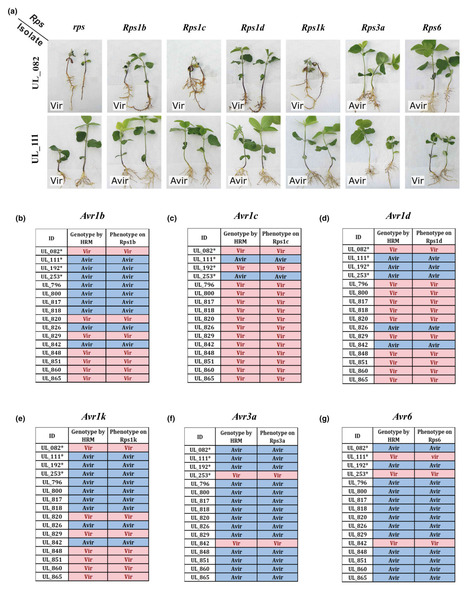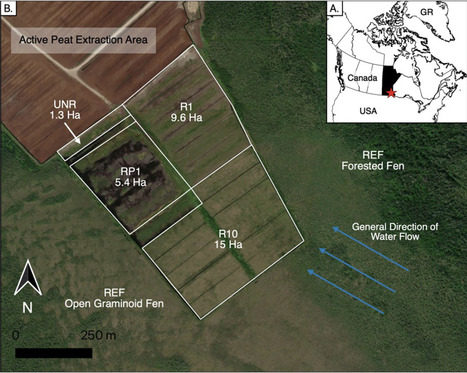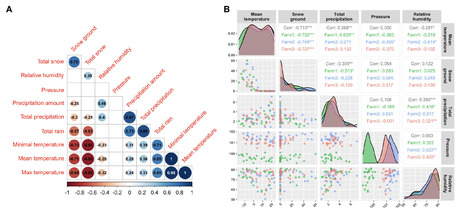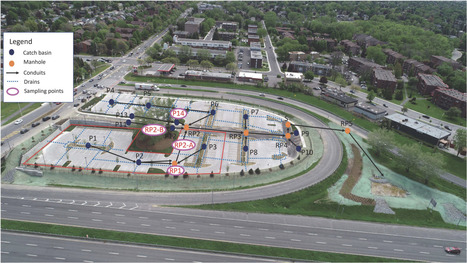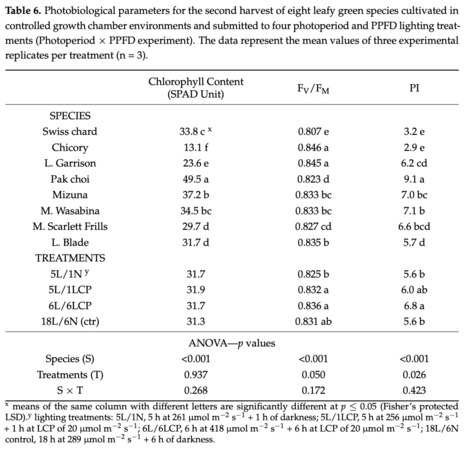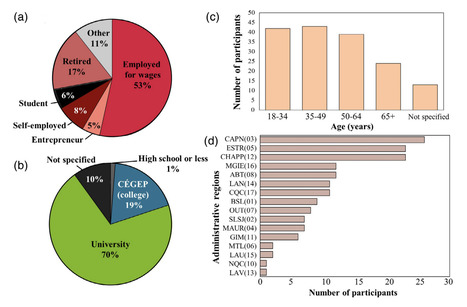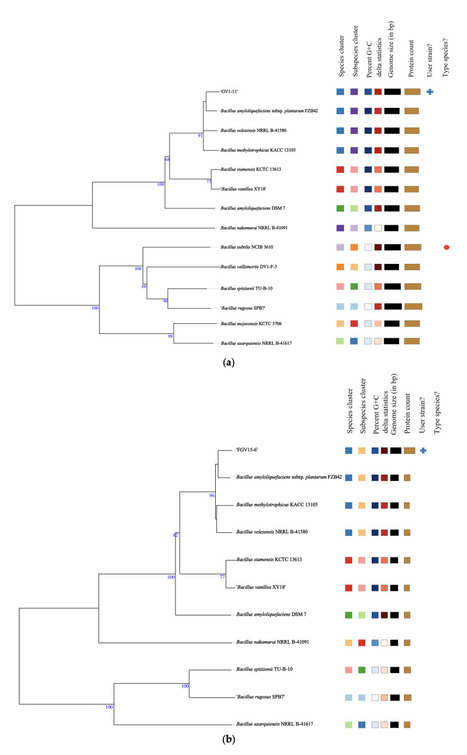 Your new post is loading...
 Your new post is loading...

|
Scooped by
ulcriv
|
Over the last few years, phytocannabinoids have been studied for their bioactive properties as potential drug candidates to treat or alleviate symptoms of several diseases. The isolation of single and pure cannabinoid (CB) from their natural source, i.e., Cannabis plants results in a low yield, diluted among hundreds of other plant metabolites. The use of biotechnological platforms to produce single CBs is appealing to the pharmaceutical industry. Therefore, our aim was to develop a sustainable system using the model diatom Phaeodactylum tricornutum to produce cannabigerolic acid (CBGA), the precursor to several CBs such as well-known cannabidiol (CBD) and delta-9-tetrahydrocannabinol (THC). We engineered P. tricornutum to express a mutant version of the Streptomyces sp. strain CL190’s naptherpin biosynthetic cluster gene B NphB (Y288A/G286S, nphB), a nonCannabis aromatic prenyltransferase enzyme, either by random integrated chromosomal expression (RICE) or extrachromosomal expression (EE), to maximize the success of protein production. The gene of nphB was linked to the reporter cyan fluorescent protein (CFP) and introduced in P. tricornutum. Clones were characterized by CFP fluorescence intensity, protein synthesis, enzymatic activity, and production of CBGA. We present, for the first time in diatoms, the successful production of a CB, CBGA up to 4.1 (± 0.2) mg/kg of microalgal fresh biomass weight. This work shows the potential of P. tricornutum as a sustainable controlled heterologous platform for CBs production, plant bioactive compounds, and relevant pharmaceuticals.

|
Scooped by
ulcriv
|
The production of influenza vaccines in plants is achieved through transient expression of viral hemagglutinins (HAs), a process mediated by the bacterial vector Agrobacterium tumefaciens. HA proteins are then produced and matured through the secretory pathway of plant cells, before being trafficked to the plasma membrane where they induce formation of virus-like particles (VLPs). Production of VLPs unavoidably impacts plant cells, as do viral suppressors of RNA silencing (VSRs) that are co-expressed to increase recombinant protein yields. However, little information is available on host molecular responses to foreign protein expression. This work provides a comprehensive overview of molecular changes occurring in Nicotiana benthamiana leaf cells transiently expressing the VSR P19, or co-expressing P19 and an influenza HA. Our data identifies general responses to Agrobacterium-mediated expression of foreign proteins, including shutdown of chloroplast gene expression, activation of oxidative stress responses and reinforcement of the plant cell wall through lignification. Our results also indicate that P19 expression promotes salicylic acid (SA) signalling, a process dampened by co-expression of the HA protein. While reducing P19 level, HA expression also induces specific signatures, with effects on lipid metabolism, lipid distribution within membranes and oxylipin-related signalling. When producing VLPs, dampening of P19 responses thus likely results from lower expression of the VSR, crosstalk between SA and oxylipin pathways, or a combination of both outcomes. Consistent with the upregulation of oxidative stress responses, we finally show that reduction of oxidative stress damage through exogenous application of ascorbic acid improves plant biomass quality during production of VLPs.

|
Scooped by
ulcriv
|
Nucleopore Complexes are intricate protein assemblies composed of diverse nucleoporins, which serve as crucial mediators for the bidirectional movement of molecules between the nucleus and cytosol. These nucleoporins share both structural and functional characteristics across yeast, mammals, and plants. This review highlights these shared architectural elements and further examines specific nucleoporins. A particular emphasis is placed on the putative homologs yeast NUP1, human NUP153, and plant NUP136, and their shared involvement in critical processes such as developmental coordination, gene regulation, and immune responses. Despite variations in their amino acid sequences, these proteins exhibit a notable degree of structural conservation, supporting a convergent evolution that would underlie their similar functionalities.

|
Scooped by
ulcriv
|
Despite bryophytes being well adapted to various ecological settings, they are rarely considered in reclamation projects. In this study, propagation regenerative capabilities of bryophytes on different substrates (sand, amphibolite, and pegmatite) and conditions (with or without peat amendment, shade and shredding) were tested in greenhouse and field experiments. In the greenhouse trial, after 6 months of reintroduction, Racomitrium species (Racomitrium canescens (Hedw.) Brid. and Racomitrium elongatum Frisvoll.) had higher regeneration compared to Polytrichum species (Polytrichum juniperinum Hedw. mixed with Polytrichum piliferum Hedw.; a combination of shade (65% shading) and peat amendment (0.5 cm depth) was found to be particularly effective, resulting in up to 100% of Racomitrium species regeneration; shredding the stems of Polytrichum species into small pieces of 0.5–1.0 cm inhibited its regeneration. In the field trial, peat amendment had no effect on moss regeneration. The addition of fluvioglacial sand or till on waste rocks promoted bryophytes regeneration in both the greenhouse and field. These results provide science-based practical knowledge to support the inclusion of native bryophytes in waste rock restoration plans for mines located in northern boreal forests.

|
Scooped by
ulcriv
|
Fusarium spp. are commonly associated with the root rot complex of soybean (Glycine max). Previous surveys identified six common Fusarium species from Manitoba, including F. oxysporum, F. redolens, F. graminearum, F. solani, F. avenaceum and F. acuminatum. This study aimed to determine their pathogenicity, assess host resistance and evaluate the genetic diversity of Fusarium spp. isolated from Canada. Pathogenicity was tested on two cultivars, ‘Akras’ (moderate resistance) and ‘B150Y1’ (susceptible), under greenhouse conditions. The virulence of the fungal isolates varied, with root rot severities ranging from 1.5 to 3.3 on a 0-4 scale. The six species were used to screen a panel of 20 Canadian soybean cultivars for resistance in a greenhouse. Cluster and principal component analyses were conducted based on the same traits as for the pathogenicity study. Two of the cultivars, ‘P15T46R2’ and ‘B150Y1’, were consistently found to be tolerant to F. oxysporum, F. redolens, F. graminearum and F. solani. To investigate the incidence and prevalence of Fusarium spp. in Canada, fungi were isolated from 106 soybean fields surveyed across Manitoba, Saskatchewan, Ontario and Quebec. Two-hundred twenty-one Fusarium isolates were identified, with phylogenetic analyses indicating diversity of the isolates in the major soybean production regions of Canada.

|
Scooped by
ulcriv
|
Wild blueberries (Vaccinium angustifolium Ait) face limited consumption due to their short production period of one month. The lack of specialized storage infrastructure quickly saturates the local market. A cost-effective solution using existing facilities and proprietary plastic pallet covers is proposed. This alternative aims to extend the shelf life of wild blueberries to remain marketable for extended periods. This project aimed to evaluate several parameters to optimize storage conditions specifically for this fruit from the Lac-Sainte-Jean region of Quebec. Two seasons, 2021 and 2022, were considered, and the experimental setup included two temperature regimes (0 and 4 °C), four different polymer types (polyethylene; Lifespan®, and PrimePro®, SPAC®), three carbon dioxide concentrations (0 %, 10 %, and 20 %), the presence or absence of sulfur dioxide (SO2) releasing patches, and two fruit types (sorted or unsorted). Fruit quality was then evaluated, considering weight loss on the pallet, berry color, firmness, acidity, total soluble solids, and overall quality. In both cases, the fruit was stored for approximately one month. It was observed that fruit could be kept effectively for up to one month using PrimePro® covers at 0 °C.

|
Scooped by
ulcriv
|
Artificial lighting, including light-emitting diode (LED) illumination, is increasingly being optimized in protected agricultural systems to maximize plant yield and quality. However, it may also cause other top–down and bottom–up effects in these relatively simple ecological communities that also include insect pests and their natural enemies. While some effects of LED lighting on insects have been demonstrated to date, it is not known how they influence biological control of insect pests in practice. To examine potential top–down and bottom–up impacts of LED illumination on greenhouse biological control with parasitoids, we studied the effects of artificially lengthened days on a tri-trophic system in cages and in a greenhouse. We grew plants under a 12-h photoperiod of white-supplemented light with 6 h of additional (1) white light or (2) red and blue light, or (3) with no additional light. We exposed the plants to the pest aphid Myzus persicae (Hemiptera: Aphididae) with or without its parasitoid wasp Aphidius matricariae (Hymenoptera: Braconidae), or to no insects. The 18-h light treatments increased mean plant dry mass by 127% compared with the 12-h control without affecting the aphid’s population density or the parasitoid’s biological control efficacy, under relatively low light conditions. This suggests that insect communities in protected agriculture can be resilient to even drastic changes in their light environment, and that adjusting crop lighting in a manner that affects plant growth does not necessarily compromise biological control’s effectiveness.

|
Scooped by
ulcriv
|
Crinum x powellii ‘Album’ belongs to the Amaryllidaceae medicinal plant family that produces a range of structurally diverse alkaloids with potential therapeutic properties. The optimal conditions for in vitro tissue growth, morphogenesis, and alkaloid biosynthesis remain unclear. Auxin and light play critical roles in regulating plant growth, development, and alkaloid biosynthesis in several Amaryllidaceae plants. Here, we have succeeded in showing, for the first time, that the combination of auxin and light significantly influence C. x powellii “Album” in vitro tissue growth, survival, and morphogenesis compared to individual treatments. Furthermore, this combination also upregulates the expression of alkaloid biosynthetic genes and led to an increase in the content of certain alkaloids, suggesting a positive impact on the defense and therapeutic potential of the calli. Our findings provide insights into the regulation of genes involved in alkaloid biosynthesis in C. x powellii “Album” callus and underline the potential of auxin and light as tools for enhancing their production in plants. This study provides a foundation for further exploration of C. x powellii “Album” calli as a sustainable source of bioactive alkaloids for pharmaceutical and agricultural applications. Furthermore, this study paves the way to the discovery of the biosynthetic pathway of specialized metabolites from C. x powellii “Album”, such as cherylline and lycorine.

|
Scooped by
ulcriv
|
The use of protoplasts in plant biology has become a convenient tool for the application of transient gene expression. This model system has allowed the study of plant responses to biotic and abiotic stresses, protein location and trafficking, cell wall dynamics, and single-cell transcriptomics, among others. Although well-established protocols for isolating protoplasts from different plant tissues are available, they have never been used for studying plant cells using cryo electron microscopy (cryo-EM) and cryo electron tomography (cryo-ET). Here we describe a workflow to prepare root protoplasts from Arabidopsis thaliana plants for cryo-ET. The process includes protoplast isolation and vitrification on EM grids, and cryo-focused ion beam milling (cryo-FIB), with the aim of tilt series acquisition. The whole workflow, from growing the plants to the acquisition of the tilt series, may take a few months. Our protocol provides a novel application to use plant protoplasts as a tool for cryo-ET.

|
Scooped by
ulcriv
|
Cannabis (Cannabis sativa L.) stands as a historically significant and culturally important plant, embodying economic, social, and medicinal relevance for human societies. However, years of prohibition and stigmatization have hindered the cannabis research community, which is hugely undersized and suffers from a scarcity of understanding of cannabis genetics and how key traits are expressed or inherited. In this study, we conducted a comprehensive phenotypic characterization of 176 drug-type cannabis accessions, representative of Canada’s legal market. We assessed germination methods, evaluated various traits including agronomic, morphological, and cannabinoid profiles, and uncovered significant variation within this population. Notably, the yield displayed a negative correlation with maturity-related traits but a positive correlation with the fresh biomass. Additionally, the potential THC content showed a positive correlation with maturity-related traits but a negative correlation with the yield. Significant differences were observed between the plants derived from regular female seeds and feminized seeds, as well as between the plants derived from cuttings and seeds for different traits. This study advances our understanding of cannabis cultivation, offering insights into germination practices, agronomic traits, morphological characteristics, and biochemical diversity. These findings establish a foundation for precise breeding and cultivar development, enhancing cannabis’s potential in the legal market.

|
Scooped by
ulcriv
|
Amaryllidaceae alkaloids (AAs) are a large group of plant specialized metabolites with diverse pharmacological properties. Norbelladine is the entry compound in AAs biosynthesis and is produced from the condensation of tyramine and 3,4-dihydroxybenzaldehyde (3,4-DHBA). There are two reported enzymes capable of catalyzing this reaction in-vitro, both with low yield. The first one, norbelladine synthase (NBS), was shown to condense tyramine and 3,4-DHBA, while noroxomaritidine/norcraugsodine reductase (NR), catalyzes a reduction reaction to produce norbelladine. To clarify the mechanisms involved in this controversial step, both NBS and NR homologs were identified from the transcriptome of Narcissus papyraceus and Leucojum aestivum, cloned and expressed in Escherichia coli. Enzymatic assays performed with tyramine and 3,4-DHBA with each enzyme separately or combined, suggested that NBS and NR function together for the condensation of tyramine and 3,4-DHBA into norcraugsodine and further reduction into norbelladine. Using molecular homology modeling and docking studies, we predicted models for the binding of tyramine and 3,4-DHBA to NBS, and of the intermediate norcraugsodine to NR. Moreover, we show that NBS and NR physically interact in yeast and in-planta, that both localize to the cytoplasm and nucleus and are expressed at high levels in bulbs, confirming their colocalization and co-expression thus their ability to work together in the same catalytic route. Finally, their co-expression in yeast led to the production of norbelladine. In all, our study establishes that both NBS and NR participate in the biosynthesis of norbelladine by catalyzing the first key steps associated in the biosynthesis of the Alzheimer’s drug galanthamine.

|
Scooped by
ulcriv
|
Adoption of soil health indicators to assess physical, biological, and chemical properties involves adapting their interpretation for a specific region using scoring functions. Accordingly, we used data provided from 1166 soil samples distributed between fine-, medium-, and coarse-textured soils, collected in agricultural areas across the province of Quebec, Canada, and analyzed for 15 soil health indicators. Scoring functions were calculated according to the means and standard deviations obtained for each soil health indicator by textural group. Three scoring types were used: “more-is-better”, “less-is-better”, and “optimum-is-best”. The results showed that 12 indicators were significantly influenced by soil texture and need separate scoring functions, except for wet aggregate stability, penetration resistance of the surface hardness (0–15 cm), and pH. This led to the development of one to three scoring functions for each soil health indicator. Correlation analysis between soil health indicators was also investigated to better understand relationships between soil physical, biological, and chemical properties. We observed that soil biological indicators were moderately to strongly correlated with each other (r = 0.59–0.74) and with soil physical indicators (r = 0.60–0.76). Overall, the results of this study led to the development of new scoring functions based on soil texture to interpret soil health indicators objectively and accurately for the benefit of Quebec farmers and agricultural stakeholders. The findings of this study demonstrated the need to adapt scoring functions to better account for the impact of regional factors on agricultural soils for the interpretation of soil health indicators.

|
Scooped by
ulcriv
|
Tomato (Solanum lycopersicum L.) is one of the most important vegetables in the world. Its extensive cultivation has made this plant the target of many viral, fungal, and bacterial diseases. Among them, the bacterial canker of tomato caused by Clavibacter michiganensis (Cm) has been named one of the most devastating diseases affecting the tomato industry worldwide. It can significantly reduce the yields and profitability of this crop. One of the big challenges we found when working with Cm and trying to characterize the virulence of different isolates was the lack of a consensus methodology to inoculate tomato plants, how to fertilize them and characterize Cm virulence. This research aimed to identify an artificial inoculation method to induce bacterial canker on tomato plants in greenhouse conditions to homogenize the results of different studies with Cm. We compared two inoculation methods, including the scalpel and syringe method with two levels of fertilization, low and high fertilization. After evaluating several variables like the percentage of necrotic leaves and the height of the plants, the results showed that the syringe inoculation with low fertilization was the most effective inoculation method allowing the development of a multilevel scale that can be used to study the interaction between tomato plants and Cm isolates.
|

|
Scooped by
ulcriv
|
The poplar-rust fungus Melampsora larici-populina is part of one of the most devastating group of fungi (Pucciniales) and causes important economic losses to the poplar industry. As an heteroecious obligate biotroph, M. larici-populina spread depends on its ability to carry out its reproductive cycle through larch and then poplar parasitism. Genomic approaches have identified over a thousand candidate secreted effector proteins (CSEPs) from the predicted secretome of M. laricipopulina which are potentially implicated in the infection process. In this study, we selected CSEP pairs (and one triplet) among CSEP gene families, which share high sequence homology but display specific gene expression profiles among the two distinct hosts. We determined their subcellular localization by confocal microscopy through expression in the heterologous plant system Nicotiana benthamiana. Five out of nine showed partial or complete chloroplastic localization. We also screened for potential protein interactors from larch and poplar by yeast two-hybrid. One pair of CSEPs and the triplet shared common interactors whereas the members of the two other pairs did not have common targets from either host. Finally, stromule induction quantification revealed that two pairs and the triplet of CSEPs induced stromules when transiently expressed in N. benthamiana. The use of N. benthamiana eds1 and nrg1 knock-out lines showed that CSEPs can induce stromules by an eds1-independent mechanism. However, CSEP homologs share the same impact on stromule induction and contributed to discovering a new stromule induction cascade that can be partially and/or fully independent of eds1.

|
Scooped by
ulcriv
|
The unfolded protein response (UPR) allows cells to cope with endoplasmic reticulum (ER) stress induced by accumulation of misfolded proteins in the ER. Due to its sensitivity to Agrobacterium tumefaciens, the model plant Nicotiana benthamiana is widely employed for transient expression of recombinant proteins of biopharmaceutical interest, including antibodies and virus surface proteins used for vaccine production. As such, study of the plant UPR is of practical significance, since enforced expression of complex secreted proteins often results in ER stress. After 6 days of expression, we recently reported that influenza haemagglutinin H5 induces accumulation of UPR proteins. Since up-regulation of corresponding UPR genes was not detected at this time, accumulation of UPR proteins was hypothesized to be independent of transcriptional induction, or associated with early but transient UPR gene up-regulation. Using time course sampling, we here show that H5 expression does result in early and transient activation of the UPR, as inferred from unconventional splicing of NbbZIP60 transcripts and induction of UPR genes with varied functions. Transient nature of H5-induced UPR suggests that this response was sufficient to cope with ER stress provoked by expression of the secreted protein, as opposed to an antibody that triggered stronger and more sustained UPR activation. As up-regulation of defence genes responding to H5 expression was detected after the peak of UPR activation and correlated with high increase in H5 protein accumulation, we hypothesize that these immune responses, rather than the UPR, were responsible for onset of the necrotic symptoms on H5-expressing leaves.

|
Scooped by
ulcriv
|
Background Cannabis is historically, culturally, and economically significant crop in human societies, owing to its versatile applications in both industry and medicine. Over many years, native cannabis populations have acclimated to the various environments found throughout Iran, resulting in rich genetic and phenotypic diversity. Examining phenotypic diversity within and between indigenous populations is crucial for effective plant breeding programs. This study aimed to classify indigenous cannabis populations in Iran to meet the needs of breeders and breeding programs in developing new cultivars. Results Here, we assessed phenotypic diversity in 25 indigenous populations based on 12 phenological and 14 morphological traits in male and female plants. The extent of heritability for each parameter was estimated in both genders, and relationships between quantitative and time-based traits were explored. Principal component analysis (PCA) identified traits influencing population distinctions. Overall, populations were broadly classified into early, medium, and late flowering groups. The highest extent of heritability of phenological traits were found in Start Flower Formation Time in Individuals (SFFI) for females (0.91) Flowering Time 50% in Individuals (50% of bracts formed) (FT50I) for males (0.98). Populations IR7385 and IR2845 exhibited the highest commercial index (60%). Among male plants, the highest extent of Relative Growth Rate (RGR) was observed in the IR2845 population (122 mg.g-1.day-1 ). Finally, populations were clustered into seven groups according to the morphological traits in female and male plants. Conclusions Overall, significant phenotypic diversity was observed among indigenous populations, emphasizing the potential for various applications. Early-flowering populations, with their high RGR and Harvest Index (HI), were found as promising options for inclusion in breeding programs. The findings provide valuable insights into harnessing the genetic diversity of indigenous cannabis for diverse purposes.

|
Scooped by
ulcriv
|
Effectors encoded by avirulence genes (Avr) interact with the Phytophthora sojae resistance gene (Rps) products to generate incompatible interactions. The virulence profile of P. sojae is rapidly evolving as a result of the large-scale deployment of Rps genes in soybean. For a successful exploitation of Rps genes, it is recommended that soybean growers use cultivars containing the Rps genes corresponding to Avr genes present in P. sojae populations present in their fields. Determination of the virulence profile of P. sojae isolates is critical for the selection of soybean cultivars. High-resolution melting curve (HRM) analysis is a powerful tool, first applied in medicine, for detecting mutations with potential applications in different biological fields. Here, we report the development of an HRM protocol, as an original approach to discriminate effectors, to differentiate P. sojae haplotypes for six Avr genes. An HRM assay was performed on 24 P. sojae isolates with different haplotypes collected from soybean fields across Canada. The results clearly confirmed that the HRM assay discriminated different virulence genotypes. Moreover, the HRM assay was able to differentiate multiple haplotypes representing small allelic variations. HRM-based prediction was validated by phenotyping assays. This HRM assay provides a unique, cost-effective and efficient tool to predict virulence pathotypes associated with six different Avr (1b, 1c, 1d, 1k, 3a and 6) genes from P. sojae, which can be applied in the deployment of appropriate Rps genes in soybean fields.

|
Scooped by
ulcriv
|
The moss layer transfer technique has been developed to restore the carbon sequestration function and typical vegetation of Sphagnum-dominated peatlands after peat extraction in North America. However, the technique does not lead to successful bryophyte establishment when applied to peatlands with a richer residual fen peat. Therefore, we evaluated an alternative method of active rewetting and passive vegetation establishment using vegetation surveys and carbon dioxide and methane (CH4) flux measurements at a post-extracted fen in southern Manitoba, Canada. After one growing season post-rewetting, wetland vegetation established and the site was a net carbon sink over the growing season. However, high abundance of Carex lasiocarpa 10 years post-treatment led to higher CH4 emissions than the reference ecosystem. Successful establishment of wetland vegetation is attributed to the area being surrounded by undisturbed fens that can provide a local source of plant propagules. Bryophyte expansion was less successful than vascular plants, likely due to episodic flooding and shading from the sedge communities. Therefore, careful management of water levels to just below the peat surface is needed if reference vegetation community recovery is the goal of restoration. Water level management will also play a key role in controlling CH4 emissions to maximize carbon sequestration potential.

|
Scooped by
ulcriv
|
Introduction. Cranberry (Vaccinium macrocarpon) is an important crop grown in the United States and Canada, with the province of Québec being the world’s largest producer of organic cranberry. However, cranberry fruit rot (CFR), caused by 12 fungal species, has become a major issue affecting yield. Methods. A molecular detection tool was used to detect the presence of the 12 CFR fungi and evaluate CFR species across three farms with different fungicide strategies in Québec. The incidence and frequency of CFR fungi were evaluated for 2020 and compared with 2018 data from the same farms in Québec. Machine-learning models were used to determine the possibility of explaining CFR disease and species based on climate, and analyze the effects of weather variables on CFR presence and primary fungal species. Results.The most predominant CFR species remained the same in both years, with Godronia cassandrae and Coleophoma empetri being the two most common, but some species showed changes in relative abundance. Furthermore, this study examined the diversity variations in 2018 and 2020, with data showing an overall increase in diversity over the period. The results showed that fungicide applications impacted the species composition of CFR among the farms. Five weather variables (daily snow on the ground (cm), total daily precipitation (mm), daily atmospheric pressure (kPa), daily relative humidity (%) and daily temperature (°C)) were selected and found to contribute differently to the model with atmospheric pressure being the most important. Surprisingly, temperature and precipitations did not influence much the incidence of fungal pathogen species and each CFR species behaved differently in response to environmental factors. Discussion: Overall, this study highlights the complexity of predicting CFR disease, as caused by 12 fungi, and of developing effective disease management strategies for CFR.

|
Scooped by
ulcriv
|
Stormwater control measures, including green and gray infrastructures, are increasingly used to enhance the level of sustainability of conventional drainage networks in managing rainfall-induced runoff. This paper studies the water quality and hydrologic performances of some bioretention cells and permeable pavements located in a parking lot in Boucherville (near Montreal), Canada, between July 2020 and November 2021. Because plants play a major role in the performance of green infrastructure, plant survival and growth monitoring were also conducted from June to September 2021. The results showed average runoff volume and average peak flow reductions of 91% and 98%, respectively, while the average delay in peak flow, for the few storm events with outflow, was 6.7 h. The average removal rates (in terms of concentration) for suspended solids, chemical oxygen demand, total phosphorus, and total nitrogen were 96%, 79%, 81%, and 90%, respectively, while there was an average increase in electric conductivity of 14%. The survival rate of trees planted in bioretention cells was 100%. For bushes, survival rates indicated a variation between 54% and 100%, while for perennials, survival rates varied between 0% and 100%. The plants with the least survival rates were Alchemilla mollis when planted at the top, with 0%, Rudbeckia fulgida var. ‘Pot of Gold,’ with 74%, and Salix purpurea ‘Gracilis,’ with 54%.

|
Scooped by
ulcriv
|
Vertical farming is experiencing significant growth, and the optimization of artificial lighting is essential for enhancing the sustainability of this growing system. Therefore, the aim of this study was to examine how light segmentation, the incorporation of a low-intensity lighting phase known as the light compensation point (LCP) instead of the traditional dark phase, and variations in the light spectrum impact the agricultural outcomes of organically cultivated leafy greens. In controlled growth chamber environments, a variety of leafy plant species (Spinacia oleracea L., Ocimum basilicum, Beta vulgaris L., Lactuca sativa L. cv. ‘Garrison’ and ‘Blade’, Brassica rapa cv. ‘Japonica’ and ‘Chinensis’, Brassica juncea cv. ‘Scarlet Frills’ and ‘Wasabina’, Eruca sativa and Perilla frutescens L.) were subjected to four light treatments with varying intensities and durations of lighting, while in a second experiment, five different spectral growing conditions were compared. Irrespective of the plant species, shortening the length of the diel cycle by extending the cumulative daily lighting to 20–24 h per day (5L/1N [5 h at 261 µmol m−2 s−1 + 1 h darkness for a total of 20 h of light per day] and 5L/1LCP [5 h at 256 µmol m−2 s−1 + 1 h LCP at 20 µmol m−2 s−1 for a total of 24 h of light per day]) led to an average increase of +12% in height, fresh weight (+16%), dry weight (+23%), and specific leaf weight (+11%), compared to the control plants (18L/6N; 18 h at 289 µmol m−2 s−1 + 6 h darkness) and 6L/6LCP plants (6 h at 418 µmol m−2 s−1 + 6 h LCP at 20 µmol m−2 s−1 for a total of 24 h of light per day) during the first harvest. This also resulted in better light utilization, expressed as increased fresh (+16%) and dry (+24%) biomass per mol of light received. Conversely, the studied light spectral treatments had no effect on the growth parameters of the four selected species. In conclusion, our study showed that reducing light intensity while extending the photoperiod could potentially represent a cost-effective LED strategy for the indoor cultivation of organically or conventionally grown leafy greens.

|
Scooped by
ulcriv
|
Micropropagation is widely used in horticulture to provide large numbers of genetically similar, disease-free plants. The intent is to produce high-quality genetically identical planting material to ensure uniformity. However, this method can result in somaclonal variation, which refers to the increased rate of unusual phenotypic developments that result from genetic mutations or epigenetic alterations. While some mutations can be visually identified due to morphological or physiological defects, many are difficult to assess based on observation alone. Various DNA markers have been employed to assess the genetic fidelity of plants. However, these techniques have limited genome coverage, which makes it challenging to determine the overall genetic fidelity of the clones. Despite this, markers have widely been employed to assess genetic fidelity and to make claims that the process produces true-to-type plants. Genotyping-by-sequencing (GBS) can sequence and genotype thousands of markers from multiple individuals simultaneously and is now a common and low-cost technique. In this study, the efficacy of GBS versus simple sequence repeats (SSRs) in evaluating genetic fidelity in a clonal population of micropropagated cannabis plants was compared. The SSR analysis resulted in eight readable markers indicating negligible genetic diversity. In contrast, the GBS analysis identified over 9000 variants in cannabis clones, revealing genetic diversity within clonal lines across multiple subcultures. This study demonstrated the increased precision of sequencing-based technologies for detecting somaclonal mutations and highlighted the limitations of using SSRs or similar markers to evaluate genetic fidelity in these systems.

|
Scooped by
ulcriv
|
While evidence of insect pollinator declines accumulates, little is known about the pollinator communities that are most vulnerable to population fluctuations and may require conservation actions. Among the main reasons for this lack of knowledge about the status and trends of native pollinators are the time, cost, and expertise required to collect and identify wild insect pollinators (bees, more specifically). Here, we discuss how leveraging the complementarity of community science and taxonomist expertise can help overcome these challenges and provide perspective and insights from launching the large-scale monitoring program Abeilles citoyennes. The overall objective of this community science project is to monitor wild bee (Apoidea) and hover fly (Syrphidae) diversity in the province of Quebec, Canada, and study the effects of landscape composition on their communities. From 2019 to 2021, 131 volunteers collected insects at 161 sites across the province. A total of 13,558 bees and 2,486 hover flies were collected and identified to species. The project protocol and potential data uses are presented, along with a discussion of the benefits and challenges of using an expert-assisted community science approach for pollinator monitoring and opportunities for improvement.

|
Scooped by
ulcriv
|
Since it inhabits young leaves and buds of strawberry (Fragaria × ananassa Duchesne) crowns, cyclamen mite (Phytonemus pallidus Banks) is a difficult pest to control with biological or chemical means once it is present in a field. Controlled atmosphere temperature treatment (CATT) is a successful technique that has been commercially used in the Netherlands for nearly 2 decades to disinfect strawberry nursery stock, including elimination of cyclamen mite. During CATT, plants are treated at 35 °C, 50% CO2, and 10% O2 under high relative humidity for 48 h. The objective of this study was to test CATT against P. pallidus in North America at a scale that can be easily used on-farms by strawberry growers. Two greenhouse experiments were conducted where infested trayplants were treated with CATT or the acaricide abamectin, and P. pallidus number were compared to control plants. Plants were destructively sampled after 4 weeks, and CATT reduced mobile forms of P. pallidus by 99.9% in both experiments. Abamectin used in the first experiment had an efficacy of 95.5%. Our findings suggest that CATT is effective at nearly eliminating P. pallidus from strawberry planting material, and its application could reduce risks of field infestations and the need for multiple acaricide applications. While our results are encouraging, additional research is needed to assess the effects of CATT on strawberry plant survival, growth, and fruit production.

|
Scooped by
ulcriv
|
Frass, the residual material resulting from the bioconversion of organic matter by black soldier fly larvae (BSFL), has gained attention as a sustainable alternative to conventional fertilizers due to its high nutrient content. Additionally, frass has been found to possess antifungal properties, which can help control plant pathogens affecting horticultural crops. In this study, frass from BSFL reared on the Gainesville diet, a universally employed reference/control diet, was investigated in vitro for its effect on the growth of seven important fungal/oomycete pathogens. Dual culture overlay assays clearly showed that fresh Gainesville diet extract, as well as BSFL frass extract derived from this diet, contained microorganisms producing compound(s) that strongly inhibit(s) the mycelial growth of fungal/oomycete plant pathogens. Fungi and bacteria were then isolated from the fresh Gainesville diet and BSFL frass using the serial dilution technique. Among the different fungi/bacteria isolated, the isolate GV1-11 in Gainesville diet and FGV15-6 in frass demonstrated strong antifungal/anti-oomycete activity. Both isolates were genetically identified by whole-genome sequencing as Bacillus velezensis, a bacterium used as a biocontrol agent, strongly suggesting that B. velezensis, which is present in the Gainesville diet, can survive the process of BSFL rearing and is one of the key factors contributing to the observed antifungal and anti-oomycete activity in the resulting frass. This work underlines the importance of the inherent microbial characteristics of feedstocks on the antifungal/anti-oomycete activity of frass and points out the possibility of exploiting frass to control plant pathogens affecting horticultural crops.
|



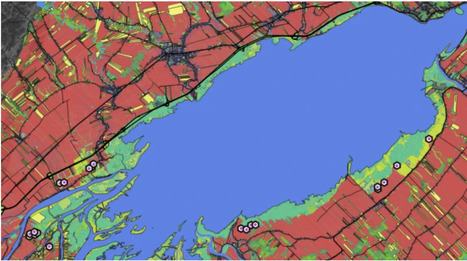


 Your new post is loading...
Your new post is loading...


